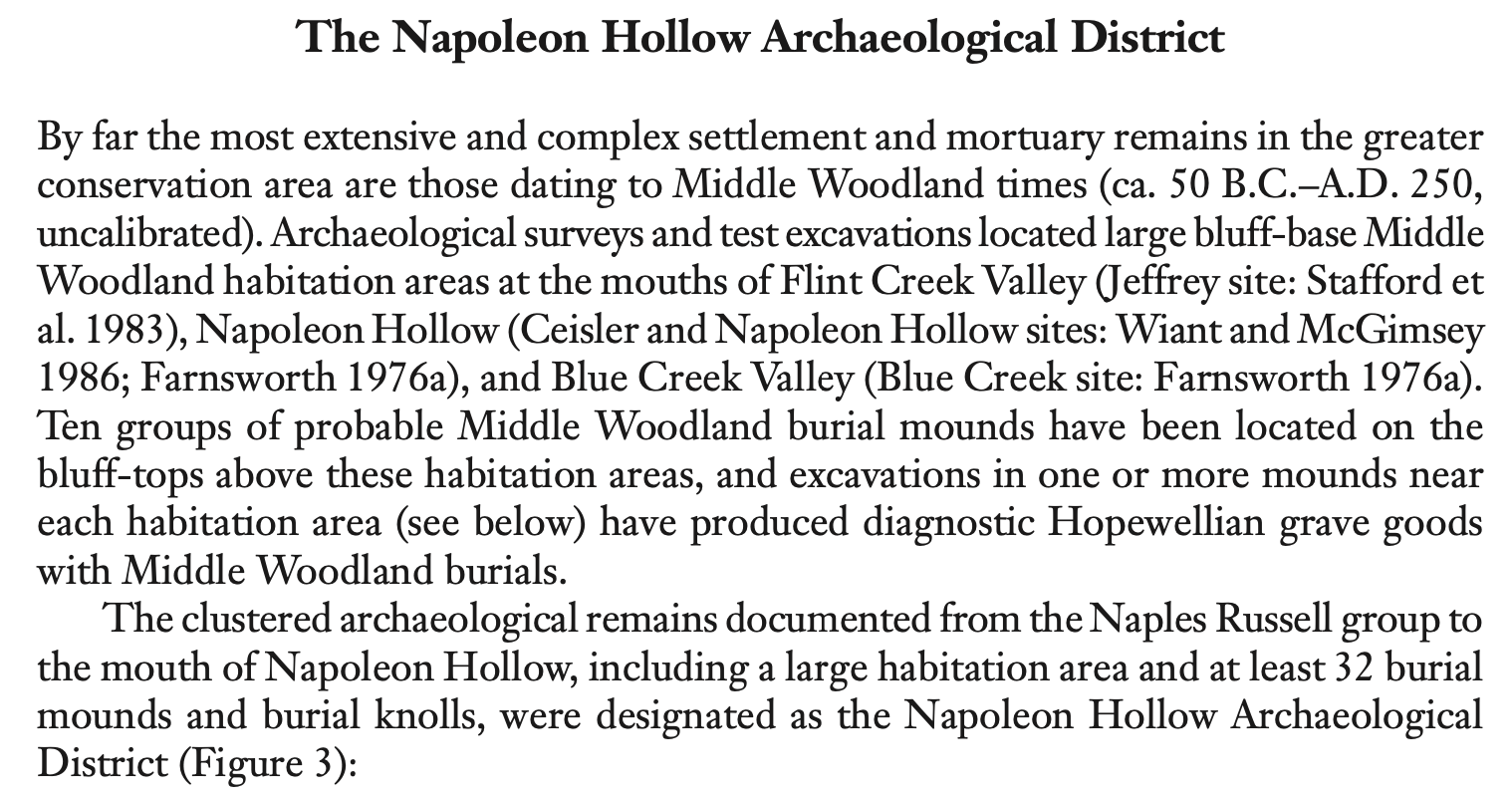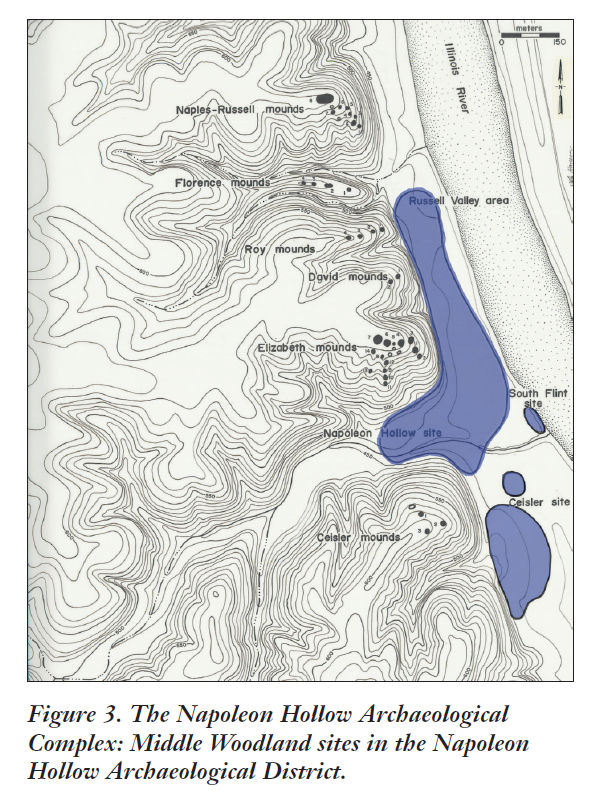IAS dates Zelph mound to 50 BC - 250 AD.
- Type
- Academic / Technical Report
- Source
- Kenneth B. Farnsworth Non-LDS
- Hearsay
- DirectSecondary
- Reference
Kenneth B. Farnsworth, "Part I: American Period, Lamanitish Arrows and Eagles with Lead Eyes: Tales of the First Recorded Explorations in an Illinois Valley Hopewell Mound", Illinois Archeology 22, No. 1 (2010): 28, 29
- Scribe/Publisher
- Illinois Archaeological Survey, Inc.
- Audience
- Academic Conference
- Transcription
The Napoleon Hollow Archaeological District
By far the most extensive and complex settlement and mortuary remains in the greater conservation area are those dating to Middle Woodland times (ca. 50 B.C.–A.D. 250, uncalibrated). Archaeological surveys and test excavations located large bluff-base Middle Woodland habitation areas at the mouths of Flint Creek Valley (Jeffrey site: Stafford et al. 1983), Napoleon Hollow (Ceisler and Napoleon Hollow sites: Wiant and McGimsey 1986; Farnsworth 1976a), and Blue Creek Valley (Blue Creek site: Farnsworth 1976a). Ten groups of probable Middle Woodland burial mounds have been located on the bluff-tops above these habitation areas, and excavations in one or more mounds near each habitation area (see below) have produced diagnostic Hopewellian grave goods with Middle Woodland burials.
The clustered archaeological remains documented from the Naples Russell group to the mouth of Napoleon Hollow, including a large habitation area and at least 32 burial mounds and burial knolls, were designated as the Napoleon Hollow Archaeological District (Figure 3) . . .
Figure 3. The Napoleon Hollow Archaeological Complex: Middle Woodland sites in the Napoleon Hollow Archaeological District.
- Citations in Mormonr Qnas
The B. H. Roberts Foundation is not owned by, operated by, or affiliated with the Church of Jesus Christ of Latter-day Saints.


